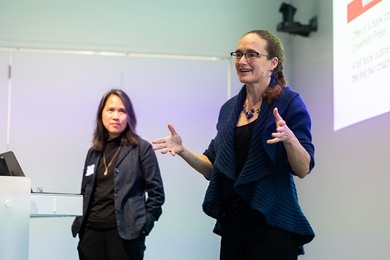Recognizing the substantial costs involved in addressing climate change through both mitigation and adaptation measures, the 2015 Paris Agreement stipulates that developed countries provide at least $100 billion a year in climate financing to developing countries, and support their transition to lower-carbon economies through international cooperation. One avenue for such cooperation is to link carbon markets — emissions trading systems that put a cap on carbon — in developed and developing regions.
This arrangement could boost the price of carbon in developing countries and thereby accelerate their efforts to shift away from carbon-intensive fuels. But studies show that it could also sharply reduce the carbon price in developed countries, thus shifting abatement from developed to developing countries. While linking carbon markets would lower the costs of reducing emissions in developed countries, and developing countries would be compensated for undertaking additional abatement via revenue from selling emissions rights, the practice would ultimately stifle energy-efficiency improvements and development of low-carbon technologies in developed countries.
This outcome could be prevented, however, if carbon-trading nations fine-tune the terms of engagement, according to a new MIT Joint Program on the Science and Policy of Global Change study in Energy Economics. By setting a limit on the number of emissions permits a developed country can import from a developing country, steep decreases in the carbon price in developed countries can be avoided, says Niven Winchester, a principal research scientist at the Joint Program and co-author of the study.
“If the U.S. trades with a developing country that has a lower carbon price, then our carbon price will come down — eventually matching the lower carbon price — and so will our incentive to decarbonize,” Winchester explains. “With the goal of restricting the carbon price reduction in the developed country, we examined the impact of imposing a limit on the volume of permits exported from the developing country.”
Using the Joint Program’s Economic Projection and Policy Analysis (EPPA) model, Winchester and his collaborators — lead author Claire Gavard, now an environmental economist at the Center for European Economic Research in Germany, who conducted part of her doctoral research at the Joint Program, and Joint Program Deputy Director Sergey Paltsev — estimated the carbon-price and emissions-reduction impacts of a range of permit volume limits on emissions trading between the U.S. and China, the European Union and China, and among all three regions in the year 2030. The limit was defined as a percentage of the total amount of emissions allowed in the developed country.
The researchers projected that meeting recently-pledged national emissions targets at the Paris climate talks through unlimited emissions trading between the U.S. and electricity and energy-intensive sectors in China would result in a common carbon price of $24 per ton* of carbon dioxide, a 70 percent price decrease in the U.S. (down from $80/ton, the estimated U.S. carbon price without international trading of emissions permits). When imported emissions were limited to 10 percent of the U.S. emissions cap, the U.S. carbon price fell to $51/ton, a 37 percent decrease, and the carbon price in China rose from $17/ton to $19/ton. In the E.U.-China case, the European carbon price fell by 59 percent under unlimited carbon trading, and 31 percent when a 10 percent emissions permit import limit was imposed.
These results, along with others produced in the study, suggest that linking carbon markets could be a win-win proposition for developing and developed countries.
“The opportunity to buy permits in China for $19 and sell them for $51 to the U.S. would present a strong financial incentive for China to link emissions trading markets with the U.S.,” says Winchester. “The U.S. would also benefit by taking advantage of low-cost emissions reductions elsewhere while still maintaining incentives to reduce emissions domestically.”
The EPPA model used in the study is supported by the Department of Energy, Environmental Protection Agency and other government, foundation and industrial sponsors of the Joint Program.
*In the study, the word “ton” refers to a metric ton, or 2,240 pounds.










